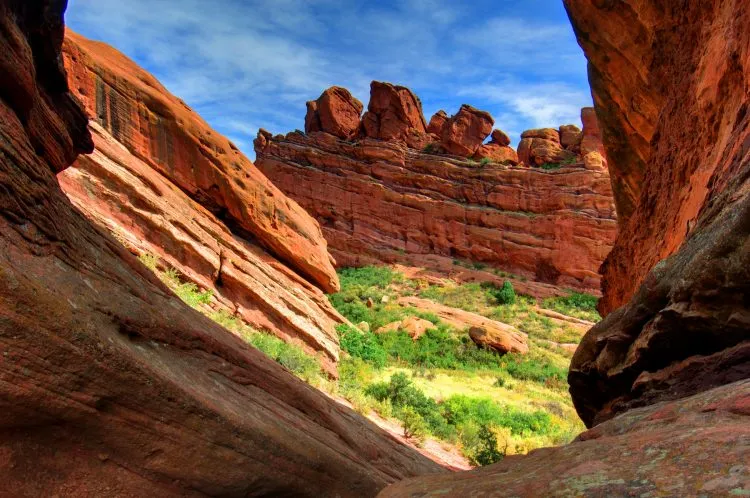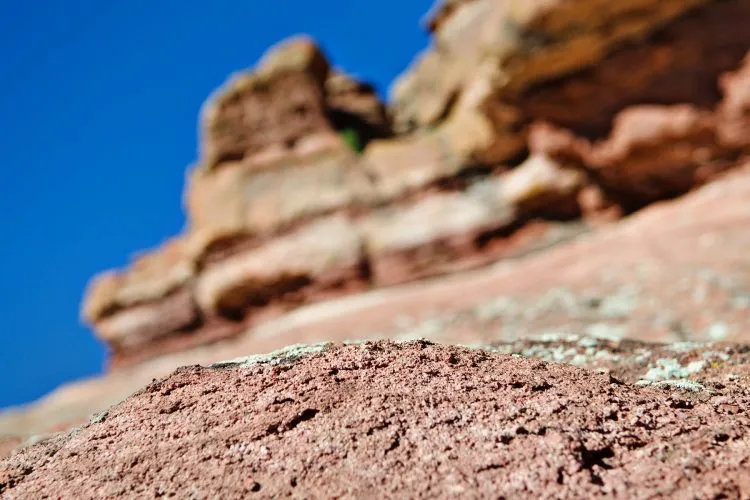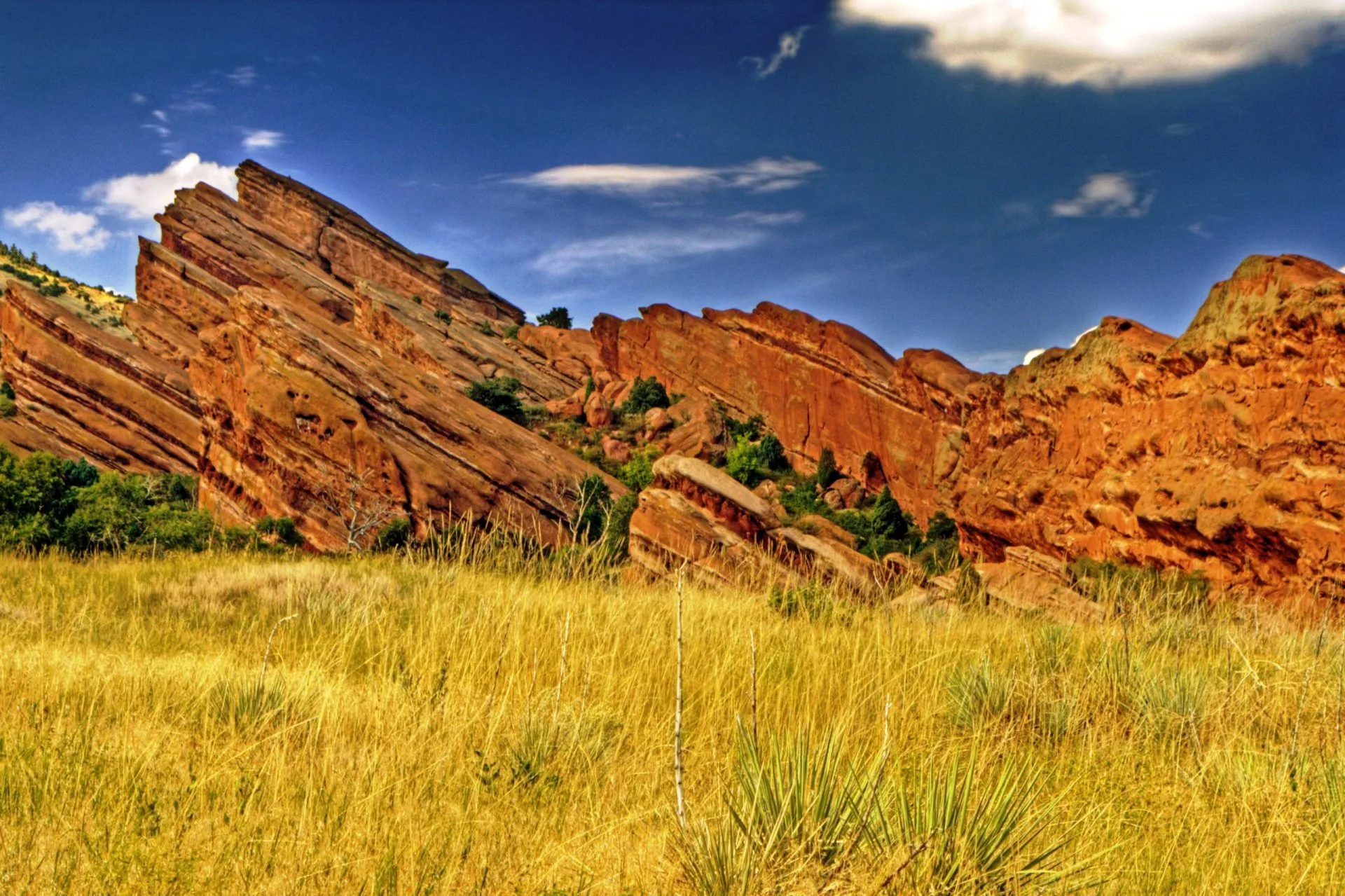The majestic Rocky Mountains in Colorado are more than just a breathtaking natural landscape; they are a living geological history book, recounting millions of years of Earth’s transformations. Layers of rock, folds, and deep cuts all conceal stories of this land’s formation and evolution. Join “Du lịch khắp thế gian” (Travel the World) as we uncover the magnificent journey of the Rockies, from their primordial beginnings to their magnificent present-day appearance.
Origins from the Sea: The Pennsylvanian Period (300 Million Years Ago)
Around 300 million years ago, during the Pennsylvanian Period, Colorado was not the towering mountain range we see today. Instead, it was a low-lying coastal area where ancient seas repeatedly advanced and retreated over millions of years. This process left behind thick layers of sediment, gradually forming ancient sandy beaches, the precursors to the magnificent sandstone formations of the future.
These distinctive sedimentary layers, containing conglomerates with varying pebble sizes, are remnants of erosion from an ancient mountain range known as the Ancestral Rockies. This range, formed from an inland sea about 300 million years ago, was continuously eroded by glaciers and rivers for millions of years, creating thick sedimentary deposits at the foothills and high plains, which are now the eastern slopes of the Rockies.

The Ancestral Rockies: A Precursor to Majesty
The Ancestral Rockies, the predecessor to today’s Rockies, stretched parallel to the current Front Range, centered around present-day Evans, Longs, and Pikes Peaks. However, this ancient mountain range was located about 30-40 miles further west than the current Rockies. Over time, the Ancestral Rockies eroded significantly, almost completely disappearing before the present-day Rockies began to form around 65 million years ago.
Remnants of the Ancestral Rockies, part of the Fountain Formation, are clearly visible at the Flatirons west of Boulder, Red Rocks, Roxborough State Park south of Littleton, and Garden of the Gods west of Colorado Springs. These massive “rock gardens” are testaments to the power of water, wind, and ice in eroding the ancient mountain range.
The Rise of the Modern Rockies: From 65 Million Years Ago to Present
About 40 million years after the Ancestral Rockies vanished, the uplift of the modern Rockies began. This process tilted the Fountain Formation on its edge, allowing water and wind to continue sculpting the unique Red Rocks landscape we see today. The uplift of the modern Rockies created a solid foundation for the formation and development of this region.
Rivers continued to carry sediment eastward, creating new formations like the Lyons, Morrison, Dakota, and many others, depositing them atop the Fountain Formation. This process spanned millions of years, contributing to the diversity and complexity of the Rockies’ geology.
The Distinctive Red Color of Red Rocks: Iron and Oxidation
Exploring Red Rocks, you’ll easily notice the variations in color and texture of the rocks from place to place. The intermingling of Fountain sandstone and conglomerates creates a spectacular landscape. Differences in grain size and hardness within the Fountain Formation lead to uneven erosion, creating unique crevices, pits, and caves. This “differential erosion” is a key factor in the distinctive beauty of Red Rocks.

The color of the Fountain Formation ranges from pale gray to pale red and deep rust. Weathering breaks down the rock, releasing minerals like iron, which then undergoes oxidation, creating the characteristic pinkish-red color of the stone. During the burial and compaction of the Fountain Formation, iron-rich groundwater seeped through the rock, leaving behind large rusty swirls, creating unique patterns on the rock surfaces.
Lyons sandstone, deposited after the Fountain Formation in the Permian Period, is also often red in color. This stone has become a popular building material in Colorado, used in many homes, churches, businesses, and sidewalks since the 19th century.
Unique Rock Formations: Ship Rock and Creation Rock
Some rock formations at Red Rocks are as steep as 90 degrees, while others lean backward. The massive monolith to the south, resembling a ship, is called “Ship Rock”. On the opposite side of the amphitheater is “Creation Rock”. Both of these monoliths are taller than Niagara Falls, creating a magnificent and awe-inspiring setting.

The Red Rocks Amphitheatre was once listed as one of the Seven Wonders of the World, a testament to the natural beauty and cultural value of this area. The combination of unique geology and human-made architecture has created a unique and memorable performing arts venue.
Conclusion: The Ongoing Geological Journey
The history of the Rocky Mountains’ formation in Colorado is a long and complex story, spanning hundreds of millions of years. From ancient seas to the rise of the Ancestral Rockies, and then to the formation of the modern Rockies, each stage has left its unique mark on the landscape. This process is still ongoing, with the continuous erosion of wind, water, and ice, continuing to sculpt the unique and magnificent shapes of the Rocky Mountains. Exploring Red Rocks and the Rockies is not just a trip; it’s a journey into the geological history of the Earth, a memorable experience for anyone who loves nature and science.